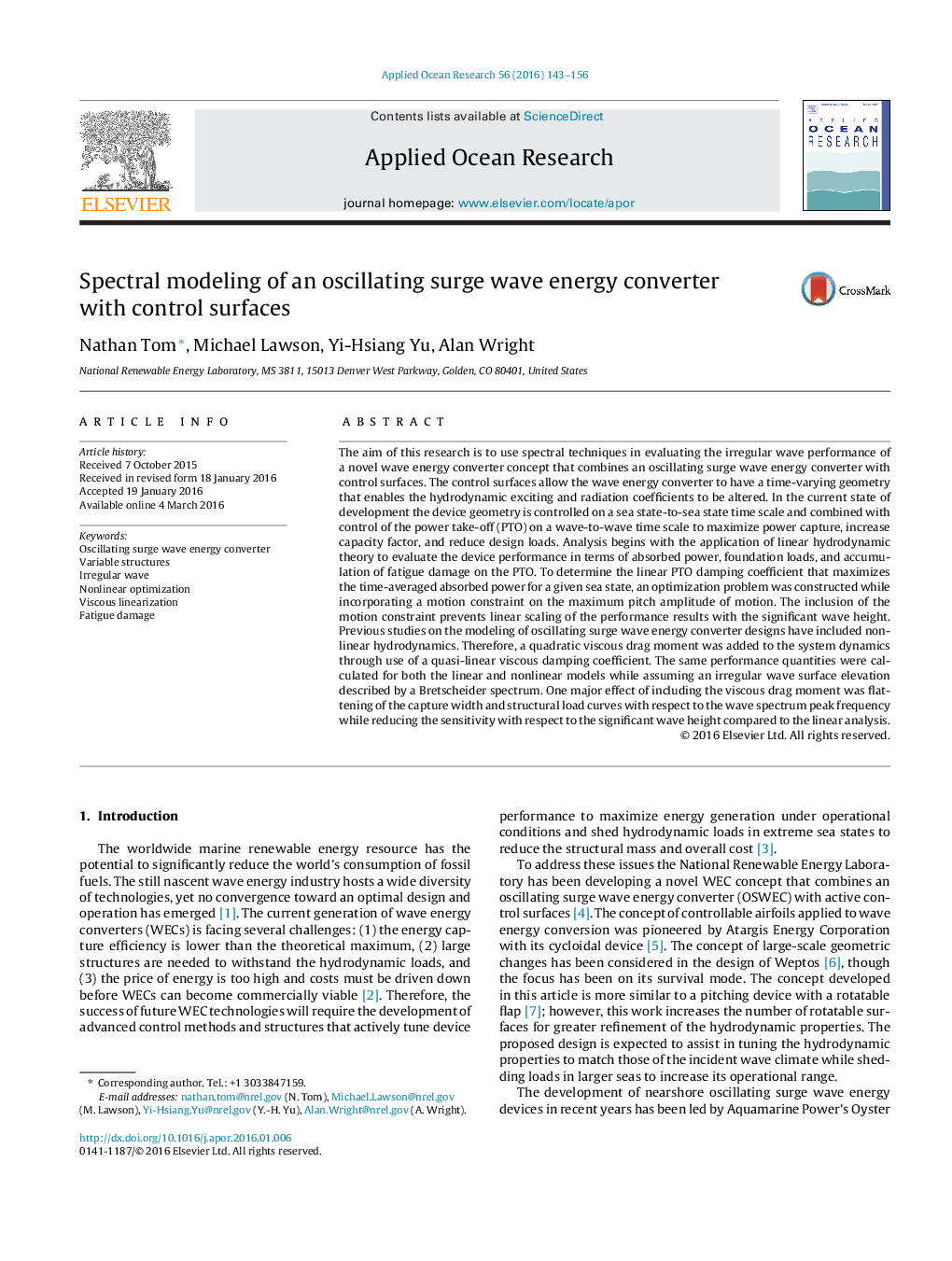| کد مقاله | کد نشریه | سال انتشار | مقاله انگلیسی | نسخه تمام متن |
|---|---|---|---|---|
| 1719820 | 1520247 | 2016 | 14 صفحه PDF | دانلود رایگان |
عنوان انگلیسی مقاله ISI
Spectral modeling of an oscillating surge wave energy converter with control surfaces
ترجمه فارسی عنوان
مدل سازی طیفی یک مبدل انرژی شتاب نوسان با سطوح کنترل
دانلود مقاله + سفارش ترجمه
دانلود مقاله ISI انگلیسی
رایگان برای ایرانیان
کلمات کلیدی
نوسان انرژی موج مبدل موج موج، ساختارهای متغیر، موج نا منظم، بهینه سازی غیر خطی، خطی سازی چسبندگی آسیب خستگی،
موضوعات مرتبط
مهندسی و علوم پایه
سایر رشته های مهندسی
مهندسی دریا (اقیانوس)
چکیده انگلیسی
The aim of this research is to use spectral techniques in evaluating the irregular wave performance of a novel wave energy converter concept that combines an oscillating surge wave energy converter with control surfaces. The control surfaces allow the wave energy converter to have a time-varying geometry that enables the hydrodynamic exciting and radiation coefficients to be altered. In the current state of development the device geometry is controlled on a sea state-to-sea state time scale and combined with control of the power take-off (PTO) on a wave-to-wave time scale to maximize power capture, increase capacity factor, and reduce design loads. Analysis begins with the application of linear hydrodynamic theory to evaluate the device performance in terms of absorbed power, foundation loads, and accumulation of fatigue damage on the PTO. To determine the linear PTO damping coefficient that maximizes the time-averaged absorbed power for a given sea state, an optimization problem was constructed while incorporating a motion constraint on the maximum pitch amplitude of motion. The inclusion of the motion constraint prevents linear scaling of the performance results with the significant wave height. Previous studies on the modeling of oscillating surge wave energy converter designs have included nonlinear hydrodynamics. Therefore, a quadratic viscous drag moment was added to the system dynamics through use of a quasi-linear viscous damping coefficient. The same performance quantities were calculated for both the linear and nonlinear models while assuming an irregular wave surface elevation described by a Bretscheider spectrum. One major effect of including the viscous drag moment was flattening of the capture width and structural load curves with respect to the wave spectrum peak frequency while reducing the sensitivity with respect to the significant wave height compared to the linear analysis.
ناشر
Database: Elsevier - ScienceDirect (ساینس دایرکت)
Journal: Applied Ocean Research - Volume 56, March 2016, Pages 143-156
Journal: Applied Ocean Research - Volume 56, March 2016, Pages 143-156
نویسندگان
Nathan Tom, Michael Lawson, Yi-Hsiang Yu, Alan Wright,
